Discover and read the best of Twitter Threads about #nshistory
Most recents (24)
We love getting questions about mining, minerals and geology! We were asked about the historic #NewCampbellton coal mine in #VictoriaCounty.
#nspoli #cbpoli #novascotia #capebreton #nshistory
@JaimeBattiste

#nspoli #cbpoli #novascotia #capebreton #nshistory
@JaimeBattiste


The New Campbellton coal mine was opened in 1862 by Charles J. Campbell, a former Member of Parliament, Member of the Legislative Assembly and executive council member. The community had been named Kelly’s Cove but was changed to New Campbellton in 1862 in honour of Mr. Campbell. 

A sample of New Campbellton’s coal was sent to the 1865 Dublin Exhibition and “was very favorably noticed by the Judges,” according to a report.
#nspoli #cbpoli #novascotia #capebreton #nshistory
#nspoli #cbpoli #novascotia #capebreton #nshistory

We love getting questions about mining, minerals and geology! We were asked about the historical #Londonderry #iron mines. Here's the story...
#nspoli #novascotia #cbpoli @ZannLenore @MunColchester #colchester #nshistory


#nspoli #novascotia #cbpoli @ZannLenore @MunColchester #colchester #nshistory



Iron mining and smelting began in #NovaScotia in 1825 when iron mines opened at Nictaux Falls, #AnnapolisCounty, and the Annapolis Iron Mining Company built a blast furnace at Clementsport between #AnnapolisRoyal and #Digby.
#nspoli #cbpoli #colchester
#nspoli #cbpoli #colchester

Iron has also been mined in numerous other locations in #NovaScotia, including East River, Bridgeville and Stellarton (#PictouCounty), Brookfield and Economy Mountain (#ColchesterCounty), Erinville and other places in #GuysboroughCounty...
#nspoli #cbpoli #colchester
#nspoli #cbpoli #colchester

#SydneyMines played a key role in #NovaScotia’s coal mining and industrial history.
Here's the story...
#nspoli #cbpoli #CapeBreton #nshistory @HomeMattersCB @JaimeBattiste @CBRMGov @AllanMacMaster @KCoombesMLA #coal


Here's the story...
#nspoli #cbpoli #CapeBreton #nshistory @HomeMattersCB @JaimeBattiste @CBRMGov @AllanMacMaster @KCoombesMLA #coal



#SydneyMines was named after Thomas Townshend (1733-1800), First Viscount Sydney, who was British Home Secretary in the Pitt Government in the 1780s. He was an important player in negotiating the Canada-US border.
#nspoli #cbpoli #CapeBreton #novascotia #nshistory
#nspoli #cbpoli #CapeBreton #novascotia #nshistory

He felt the British needed to keep Canada so loyalists – Americans who supported the British side in the US War of Independence - would have a safe haven to go to after the war.
#nspoli #cbpoli #CapeBreton #novascotia #nshistory
#nspoli #cbpoli #CapeBreton #novascotia #nshistory

We love getting questions about mining, minerals and geology! We were asked about the historical #gypsum quarry which today is the beautiful Kempt Quarry Recreation Site in #WestHants.
Here's the story:
#nspoli #cbpoli #novascotia @MLAChuckPorter @RegMunWWH #nshistory

Here's the story:
#nspoli #cbpoli #novascotia @MLAChuckPorter @RegMunWWH #nshistory


Gypsum quarrying began in #HantsCounty in the 1700s when farmers exported it as fertilizer. #Gypsum fixes alkaline (high pH) soil. US inventor Ben Franklin learned this from the French and brought the idea to the US in 1785.
#nspoli #cbpoli #novascotia @MLAChuckPorter @RegMunWWH
#nspoli #cbpoli #novascotia @MLAChuckPorter @RegMunWWH

One of #NovaScotia's oldest mines was the Sibley Mountain Slate Quarry in #ColchesterCounty. From the 1770s to 1860s it provided shingles and flagstones for buildings in #Halifax and England.
Here's the story...
#nspoli #nshistory @LarryHarrisonPC @ZannLenore @MunColchester

Here's the story...
#nspoli #nshistory @LarryHarrisonPC @ZannLenore @MunColchester


Only the early Acadian mines at Joggins, which provided coal for Fort Beausejour and Port Royal, and the French mine at Port Morien, which provided coal for Louisbourg, are known to be older.
#nspoli #nshistory @LarryHarrisonPC @ZannLenore
#nspoli #nshistory @LarryHarrisonPC @ZannLenore

The Sibley Mountain quarry was built on land owned by John Olemixon and was commissioned by his close friend, John Wentworth, who became Lieutenant Government of #NovaScotia in 1792.
#nspoli #nshistory @LarryHarrisonPC @ZannLenore

#nspoli #nshistory @LarryHarrisonPC @ZannLenore


The #Walton #barite mine, before and after!
One of the biggest barite deposits in the world is in #HantsCounty. It was mined from 1941-78. Today it's a lovely lake and greenspace.
#nspoli #cbpoli #novascotia #capebreton #nshistory @MLAChuckPorter


One of the biggest barite deposits in the world is in #HantsCounty. It was mined from 1941-78. Today it's a lovely lake and greenspace.
#nspoli #cbpoli #novascotia #capebreton #nshistory @MLAChuckPorter



A small, 1 metre-square outcrop of barite was discovered in 1894 but its location was lost to time until 1940 when prospector Roscoe Hiltz rediscovered it. Subsequent exploration confirmed the existence of a major deposit at the site and a surface mine started the following year. 

In 1955 exploration drilling underneath the barite deposit discovered several metals: lead, zinc, copper and silver. Underground mining started in 1961 and made the site a significant producer of these metals along with its lucrative barite production.
#nspoli #cbpoli #novascotia
#nspoli #cbpoli #novascotia

This is the #Dingwall gypsum quarry, before and after!
Check out this history of this beautiful former quarry!
#nspoli #cbpoli #novascotia #Capebreton #nshistory #nshist
@AllanMacMaster @JaimeBattiste @TourismCB @TourismNS @HistoricNS @GeoffMacLellan @HomeMattersCB @ChenderMLA

Check out this history of this beautiful former quarry!
#nspoli #cbpoli #novascotia #Capebreton #nshistory #nshist
@AllanMacMaster @JaimeBattiste @TourismCB @TourismNS @HistoricNS @GeoffMacLellan @HomeMattersCB @ChenderMLA


The #CapeBreton quarry was opened in 1933 by the Atlantic Gypsum Mining Company and taken over in 1937 by @NationalGypsum when it bought AGMC. National Gypsum continued to operate the Dingwall quarry until 1955.
#nspoli #cbpoli #novascotia

#nspoli #cbpoli #novascotia
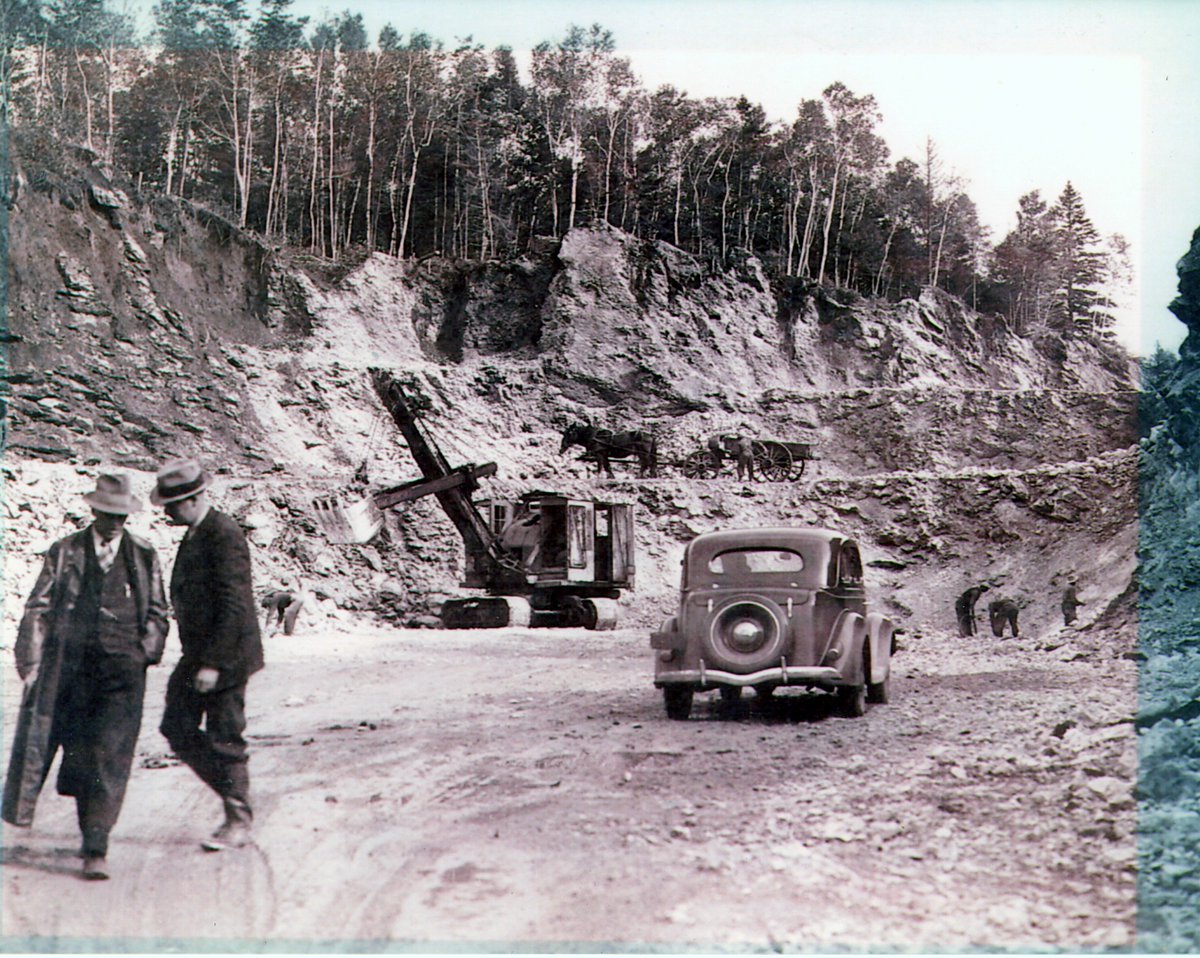

Dingwall produced about 10 million tons of gypsum in its 22 years of operation.
National Gypsum closed the #Dingwall quarry in 1955 because it was opening the world’s largest surface gypsum mine in #Milford, East Hants.
#nspoli #cbpoli #novascotia #Capebreton
National Gypsum closed the #Dingwall quarry in 1955 because it was opening the world’s largest surface gypsum mine in #Milford, East Hants.
#nspoli #cbpoli #novascotia #Capebreton

Finding replacement stone for heritage buildings renovations can be complicated! Check out this example – the beautiful #Halifax Armoury!
#nspoli #cbpoli #novascotia #capebreton #nshistory
@CanadianForces @HarjitSajjan @AndyFillmoreHFX @vote4labi @MikeSavageHFX @HalifaxCitadel

#nspoli #cbpoli #novascotia #capebreton #nshistory
@CanadianForces @HarjitSajjan @AndyFillmoreHFX @vote4labi @MikeSavageHFX @HalifaxCitadel


The #Halifax Armoury was built from 1895-99 of red sandstone, part of a federal government initiative in the late 1800s to build militia practice, training and recruitment centres in cities across Canada.
#nspoli #cbpoli #novascotia #capebreton #nshistory #nshist
#nspoli #cbpoli #novascotia #capebreton #nshistory #nshist

Soldiers would amalgamate at the Armoury (sometimes called Armouries) before departing by ship for the Boer War and both World Wars. The Armoury has served as home to the Princess Louise Fusiliers and the Halifax Rifles of the Royal Canadian Armoured Corps...
#nspoli #novascotia
#nspoli #novascotia

The #Pictou Coalfield played an important role in #NovaScotia’s industrial history.
Check out this history of #coal mining in Pictou!
#nspoli #cdnpoli #nshistory @ns_moi @NS_Museum
@karla_macf_pc @TimHoustonNS @SeanFraserMP
Check out this history of #coal mining in Pictou!
#nspoli #cdnpoli #nshistory @ns_moi @NS_Museum
@karla_macf_pc @TimHoustonNS @SeanFraserMP

The #Pictou Coalfield's 15 major coal seams in the #Westville, #Stellarton, and #Thorburn-Greenwood areas hosted many mines that created jobs and provided fuel for #NovaScotians.
#nspoli #cdnpoli #NovaScotia
#nspoli #cdnpoli #NovaScotia

Gold in Clayton Park?!
There were reportedly several small-scale gold mines on Geizer Hill starting at the end of the 1800s.
Read this thread for more info!
#nspoli #cbpoli #novascotia #capebreton #nshistory
@geoffregan @RafahDiCostanzo @SeanFraserMP @LarryHarrisonPC

There were reportedly several small-scale gold mines on Geizer Hill starting at the end of the 1800s.
Read this thread for more info!
#nspoli #cbpoli #novascotia #capebreton #nshistory
@geoffregan @RafahDiCostanzo @SeanFraserMP @LarryHarrisonPC


Geizer Hill, the other side of hwy 102 from #BayersLake, was forested back then. An article in the Feb. 1898 edition of Canadian Mining Reviews even described it as being “about three miles from Halifax,” a reminder of how much #Halifax has grown over the past century.
#nspoli
#nspoli

According to the article, “a trial run of one ton [of ore] gave six penny weights, eight grains." One penny weight is 1.5 grams so this test of the ore produced about 9 grams of #gold, or a 1/3 of an ounce.
#nspoli #cbpoli #novascotia #capebreton #nshistory
#nspoli #cbpoli #novascotia #capebreton #nshistory

Wine Harbour, #GuysboroughCounty, was named for a ship that sank in the harbour with its cargo of wine.
Check out this thread for the history of #gold mining in the area!
#nspoli #cbpoli #novascotia #capebreton #nshistory
@SeanFraserMP @modgcao @lloydphines

Check out this thread for the history of #gold mining in the area!
#nspoli #cbpoli #novascotia #capebreton #nshistory
@SeanFraserMP @modgcao @lloydphines
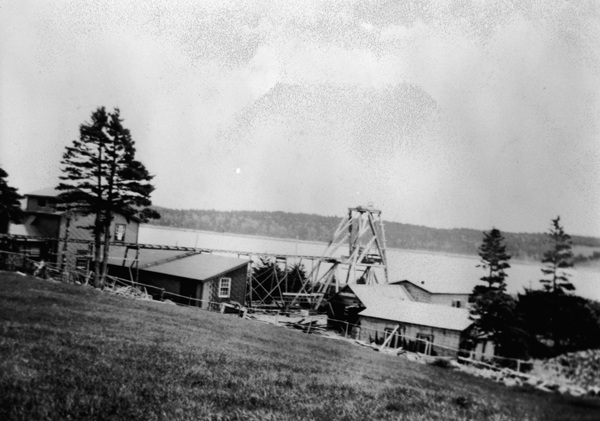

According to Nova Scotia’s Chief Gold Commissioner at the time, gold was discovered in the Wine Harbour Gold District in July 1860 by Joseph Smith when he spotted a few specks of #gold in the sand around Barachois Cove.
#nspoli #cbpoli #novascotia #capebreton #nshistory
#nspoli #cbpoli #novascotia #capebreton #nshistory

However, it was not until a year later, in July 1861, that Smith made the discovery that triggered the #gold rush in Wine Harbour. He found a small piece of gold-bearing quartz while prospecting on the northeastern shore of the harbour and...
#nspoli #cbpoli #novascotia
#nspoli #cbpoli #novascotia
Gold was discovered at #LakeCatcha, #Halifax County, in 1865 but not much attention was payed to the discovery until 1881.
Check out this thread for the history of the Lake Catcha #gold district!
#nspoli #cbpoli #novascotia #capebreton #nshistory
@darrellsamson @David_Hendsbee

Check out this thread for the history of the Lake Catcha #gold district!
#nspoli #cbpoli #novascotia #capebreton #nshistory
@darrellsamson @David_Hendsbee


Most of the mining and development in this district was done by the Oxford #Gold Mining Company which was very active from 1881-1896. By 1882 Oxford had acquired a number of areas north of the lake, erected a 10-stamp mill and become a steady producer.
#nspoli #cbpoli #novascotia
#nspoli #cbpoli #novascotia

Under J. M. Reid, the company’s mine manager, Lake Catcha became one of the most productive #gold districts in Nova Scotia.
Unfortunately, Reid had to quit work in late 1894 due to health issues after running the Oxford mine for 10 years.
#nspoli #cbpoli #novascotia
Unfortunately, Reid had to quit work in late 1894 due to health issues after running the Oxford mine for 10 years.
#nspoli #cbpoli #novascotia

The first confirmed discovery of #gold in #NovaScotia was made in 1858 at #Mooseland. However, there is reason to believe that gold was found in #NS prior to then - even if in some cases people were unaware of what they had discovered!
#nspoli #cbpoli #capebreton #nshistory

#nspoli #cbpoli #capebreton #nshistory


An 1868 book by Alexander Heatherington called “A Practical Guide for Tourists, Miners and Investors, and all Persons interested in the Development of the #Gold Fields of Nova Scotia” discusses examples of potential earlier discoveries.
#nspoli #cbpoli #capebreton #novascotia
#nspoli #cbpoli #capebreton #novascotia

Gold may have been sighted as early as 1578 when explorer Sir Humphrey Gilbert was given a patent by Queen Elizabeth to search for #gold and silver in the New World. The patent reserved 20% of any discoveries for the Crown.
#nspoli #cbpoli #capebreton #novascotia
#nspoli #cbpoli #capebreton #novascotia

We love getting questions about mining, minerals and geology! We were asked about the Middle River #gold mine (aka Gold Brook) in #VictoriaCounty...
#nspoli #cbpoli #novascotia #capebreton #nshistory
@JaimeBattiste @victoria_county

#nspoli #cbpoli #novascotia #capebreton #nshistory
@JaimeBattiste @victoria_county


Two people - A farmer called Morrison and a J.G. McLeod – are credited in historical records with discovering #gold in Middle River and they were each given free claims for the discovery.
#nspoli #cbpoli #novascotia #capebreton #nshistory
#nspoli #cbpoli #novascotia #capebreton #nshistory

A free claim (no staking fees for 21 years) was awarded to the discoverer of #gold in an area, but by definition there can’t have been two discoverers.
#nspoli #cbpoli #novascotia #capebreton #nshistory
#nspoli #cbpoli #novascotia #capebreton #nshistory

Reclaimed mines are often hidden in plain view! For example, this beautiful lake is the former #Cheticamp #gypsum quarry in Cape Breton. Here’s the history of this amazing site:
#nspoli #cbpoli #novascotia #capebreton #nshistory
@mikekelloway @AllanMacMaster @BAMacQuarrie


#nspoli #cbpoli #novascotia #capebreton #nshistory
@mikekelloway @AllanMacMaster @BAMacQuarrie

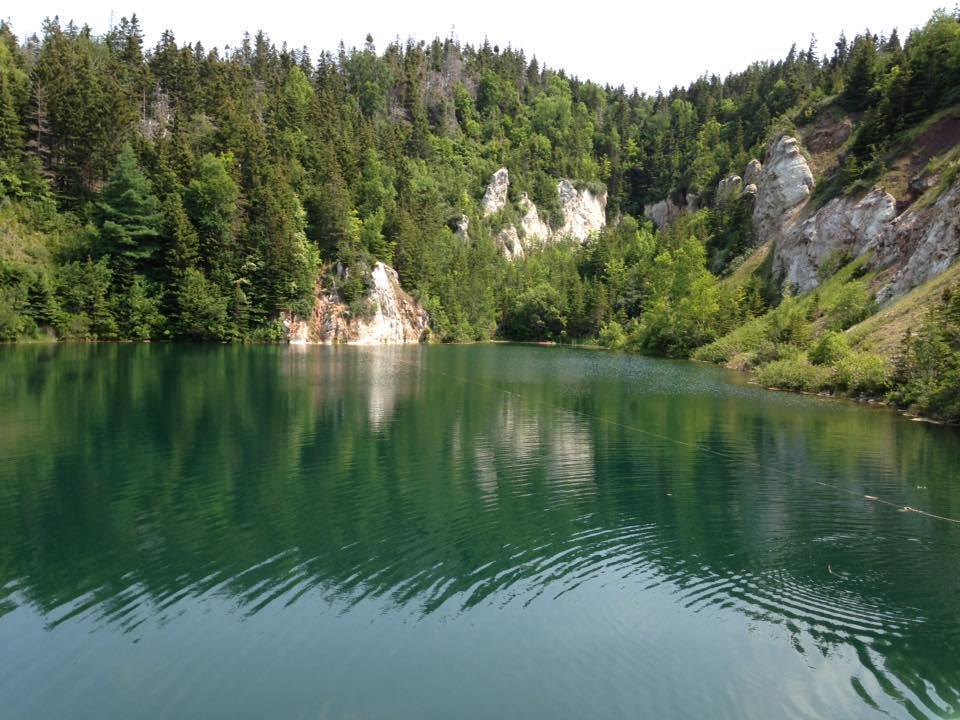
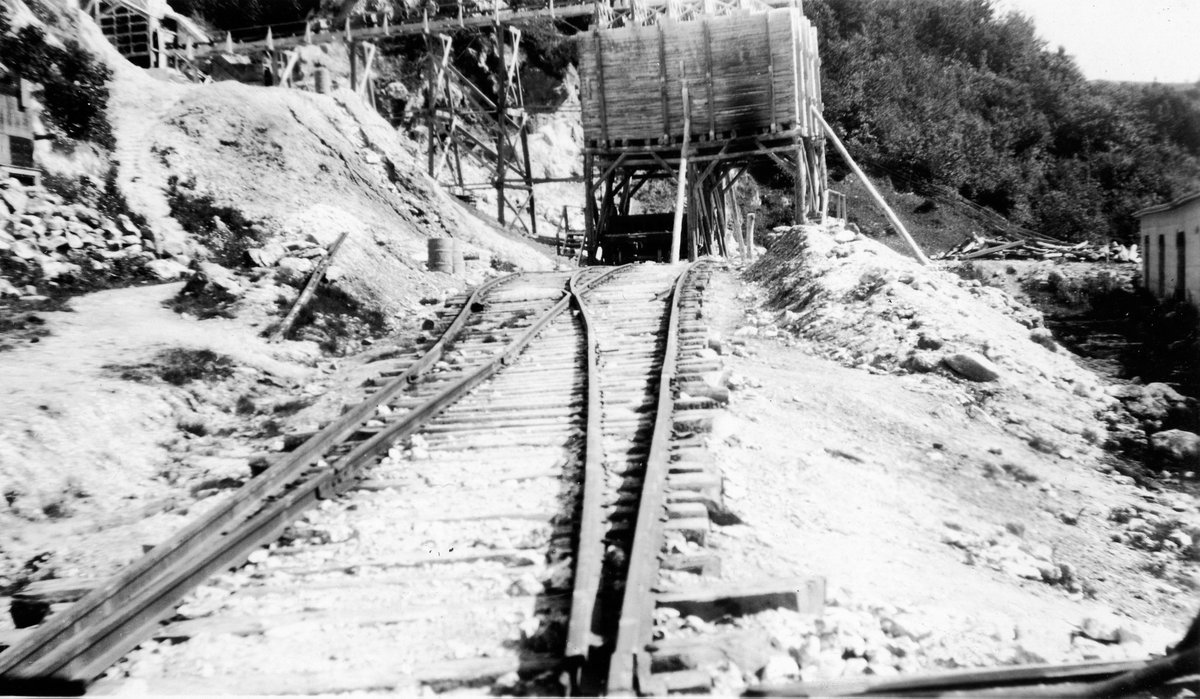
Father P. Fiset, parish priest in #Cheticamp, and his nephew Louis, a doctor, formed the Great Northern Mining Company about 1907. To raise funds, they sold shares for 5 cents each in Cheticamp. Shares were also sold in Quebec where the Fisets were well-known.
#nspoli #cbpoli
#nspoli #cbpoli
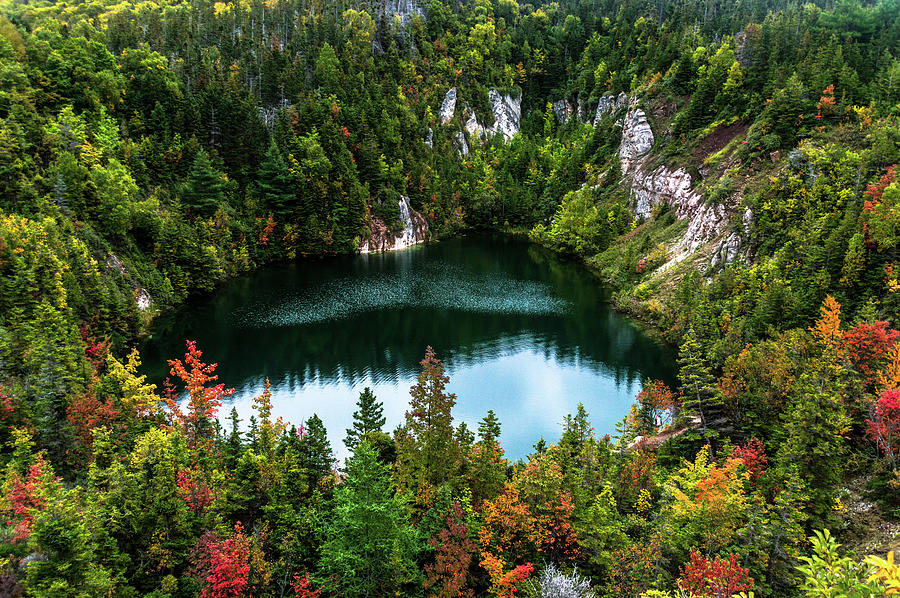
In spring 1908 equipment for a mill was delivered to Government Wharf and hauled by horse and cart to Bell-Marche where the mill was built. The first #gypsum rock went through the mill on August 20, 1908.
#nspoli #cbpoli #novascotia #capebreton #nshistory
#nspoli #cbpoli #novascotia #capebreton #nshistory

#Gold was discovered in #Molega in June 1886, reportedly by two men from nearby #Brookfield, Robie Hunt and Hubert Spidel.
Check out this history of mining in the area!
#nspoli #cbpoli #novascotia
@GordonWilsonLNS @BernJordanMP @RegionofQueens #queenscounty #nshistory @LHNOWnews

Check out this history of mining in the area!
#nspoli #cbpoli #novascotia
@GordonWilsonLNS @BernJordanMP @RegionofQueens #queenscounty #nshistory @LHNOWnews

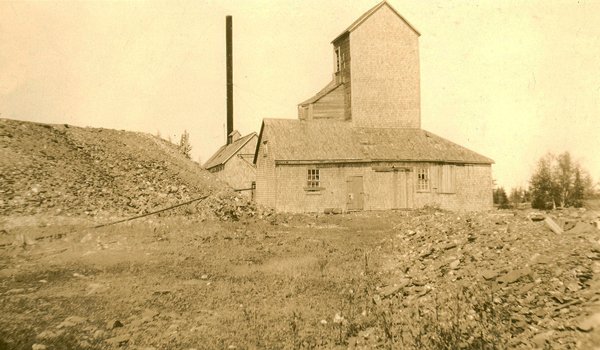
There was a rush of prospectors into the area, which is in #QueensCounty between the #Molega and Ponhook lakes. Molega quickly grew from a population of a dozen to over a thousand, and four general stores, a school and three hotels were built within a few years.
#nspoli #cbpoli
#nspoli #cbpoli

Work in 1886 exposed several #gold-bearing quartz veins and mining began.
#nspoli #cbpoli #novascotia
#nspoli #cbpoli #novascotia

We love getting questions about #mining, #minerals and #geology! We were asked about historical #gold mining in #Brookfield, #QueensCounty. Check out this thread!
#nspoli #novascotia #nshistory #cbpoli #capebreton
@GordonWilsonLNS @BernJordanMP @RegionofQueens @LHNOWnews

#nspoli #novascotia #nshistory #cbpoli #capebreton
@GordonWilsonLNS @BernJordanMP @RegionofQueens @LHNOWnews


While there were several mines in the #Brookfield #Gold District, almost all the gold produced came from the Brookfield mine operated by Wilbur L. Libbey, which was discovered in 1885.
#nspoli #novascotia #nshistory #cbpoli #capebreton
#nspoli #novascotia #nshistory #cbpoli #capebreton

In July 1886, it was acquired by John McGuire and some American associates known as the #Brookfield Milling Company. Under McGuire's management a considerable amount of ore was mined and hauled to #PleasantRiver, #Lunenburg County, for milling.
#nspoli #novascotia #nshistory
#nspoli #novascotia #nshistory
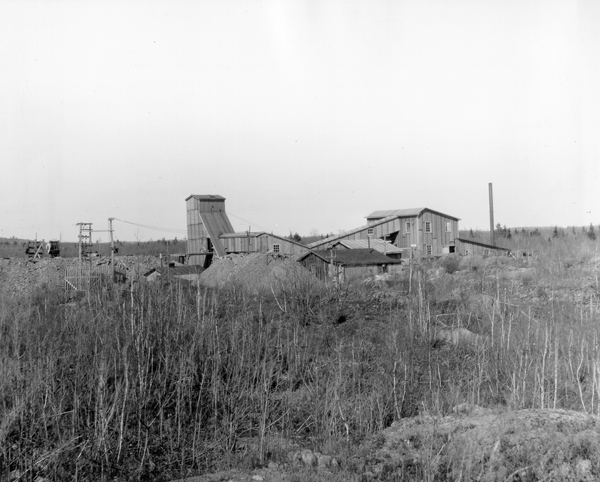
We love getting questions about #mining, #minerals and #geology! We were asked about mining in Gays River:
#nspoli #cbpoli #novascotia #capebreton #nshistory @SeanFraserMP @LarryHarrisonPC #gold

#nspoli #cbpoli #novascotia #capebreton #nshistory @SeanFraserMP @LarryHarrisonPC #gold


#Gold was discovered in Gays River, Colchester County, by George Gay and Berry Corbett on their adjoining farms in June 1862. Unfortunately, the pair initially charged exorbitant prices for accessing their properties which delayed prospecting and mining.
#nspoli #novascotia
#nspoli #novascotia

In 1866, a small crusher was built but was not kept very busy. In 1869, a handful of tunnels and shafts were dug.
#nspoli #novascotia #nshistory
#nspoli #novascotia #nshistory

Why does the granite at #PeggysCove have so many cracks?!
Check out this thread for the answer.
#nspoli #cbpoli #novascotia #capebreton @BernJordanMP @MattWhitman2020 @HughMacKayCSM @TourismNS @NS_Museum #nshistory #geology
Check out this thread for the answer.
#nspoli #cbpoli #novascotia #capebreton @BernJordanMP @MattWhitman2020 @HughMacKayCSM @TourismNS @NS_Museum #nshistory #geology

The rocks at #PeggysCove began 470 million years ago as mud and sand in a deep ocean basin near ancient Africa. They built up and were eventually compacted into shale and sandstone.
#nspoli #cbpoli #novascotia #capebreton #nshistory #geology
#nspoli #cbpoli #novascotia #capebreton #nshistory #geology

As tectonic plate movement caused North Africa and North America to collide 400 million years ago, the shale and sandstone were squeezed between the two continents and heat and pressure transformed them into slate and quartzite.
#nspoli #cbpoli #novascotia #capebreton #nshistory
#nspoli #cbpoli #novascotia #capebreton #nshistory

In August 1895, D. M. Thompson of #Musquodoboit discovered gold in a boulder in #CowBay, #HRM.
Check out this thread for the history of #gold mining in the area!
@BarbaraAdamsPT @bill_karsten @DarrenFisherNS @darrellsamson @MikeSavageHFX #nspoli #novascotia #halifax #nshistory

Check out this thread for the history of #gold mining in the area!
@BarbaraAdamsPT @bill_karsten @DarrenFisherNS @darrellsamson @MikeSavageHFX #nspoli #novascotia #halifax #nshistory


Gold was discovered in Renfrew, originally known as Nine Mile River, in 1861 by William Thompson who found a boulder that contained #gold on the banks of the brook near his saw mill. Later that year, John McPhee discovered additional quartz veins near Thompson's mill.
#nspoli #NS

#nspoli #NS

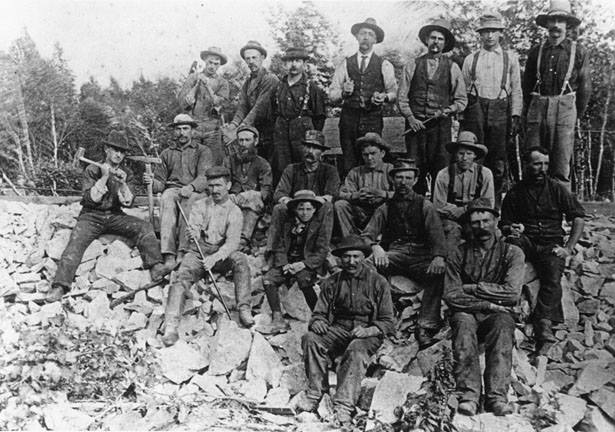
These discoveries led to a swirl of activity by many small companies and prospectors staking claims.
Production began in 1862 but didn't boom until 1863 when #gold recovery more than doubled from 308 ounces in 1862 to 785 ounces in 1863.
#nspoli #novascotia #nshistory #mining
Production began in 1862 but didn't boom until 1863 when #gold recovery more than doubled from 308 ounces in 1862 to 785 ounces in 1863.
#nspoli #novascotia #nshistory #mining

In 1864 mining increased significantly but no crushing of ore was done during the last three months of the year due to a drought, water being essential to the process.
#nspoli #novascotia #nshistory #mining #gold
#nspoli #novascotia #nshistory #mining #gold
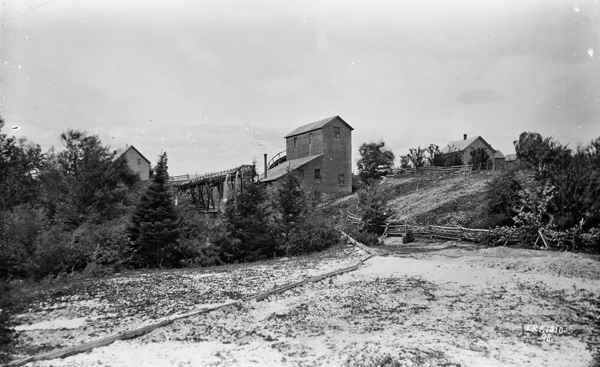
Why was #Yukon Gold Rush town #DawsonCity named after a #NovaScotian? Read this thread to find out!
#nspoli #cbpoli #novascotia @karla_macf_pc @TimHoustonNS #nshistory @SeanFraserMP @PictouAdvocate @TOWNofPICTOU @GSC_CGC

#nspoli #cbpoli #novascotia @karla_macf_pc @TimHoustonNS #nshistory @SeanFraserMP @PictouAdvocate @TOWNofPICTOU @GSC_CGC
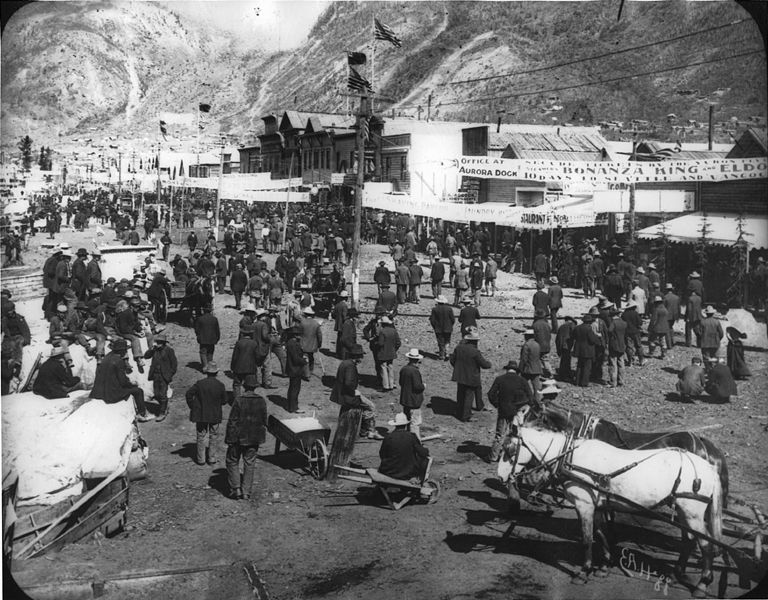

#Pictou’s George Mercer Dawson led the expedition that surveyed the intern'l boundary between Alaska and Yukon. The expedition left Ottawa on April 22, 1887 and traveled into the Yukon’s wild, remote country to record its geography, geology, botany, native languages and legends. 

Gold was discovered in Oldham, northeast of #Halifax airport, in 1861 by Edward Horne and Samuel Isner.
Read this thread for the history of the Oldham #gold mines!
#nspoli #cbpoli #novascotia @Bill_Horne @SeanFraserMP
@SteveStreatch @MikeSavageHFX #nshistory #mining @NS_Museum

Read this thread for the history of the Oldham #gold mines!
#nspoli #cbpoli #novascotia @Bill_Horne @SeanFraserMP
@SteveStreatch @MikeSavageHFX #nshistory #mining @NS_Museum


They had noticed a large quartz boulder in the woods on hunting trips. They saw #gold in it and triggered a gold rush that resulted in Oldham mines being some of the most productive in #NovaScotia. The area was mined from 1862-1946 and produced a total of 85,178 ounces.
#nspoli
#nspoli

One lot of quartz extracted in 1864 had a phenomenal yield of 103 ounces of #gold per ton. To put that in perspective, successful historical Nova Scotia gold mines often had just one or two ounces of gold per ton.
#nspoli #cbpoli #NovaScotia #nshistory
#nspoli #cbpoli #NovaScotia #nshistory

In #WWII, #coal was central to the war effort. It not only kept people warm but powered industry, railways and shipping. The war couldn’t be fought with it and it was essential to the #Canadian economy.
#nspoli #cbpoli #novascotia #capebreton #cb #ns #nshistory #mining

#nspoli #cbpoli #novascotia #capebreton #cb #ns #nshistory #mining

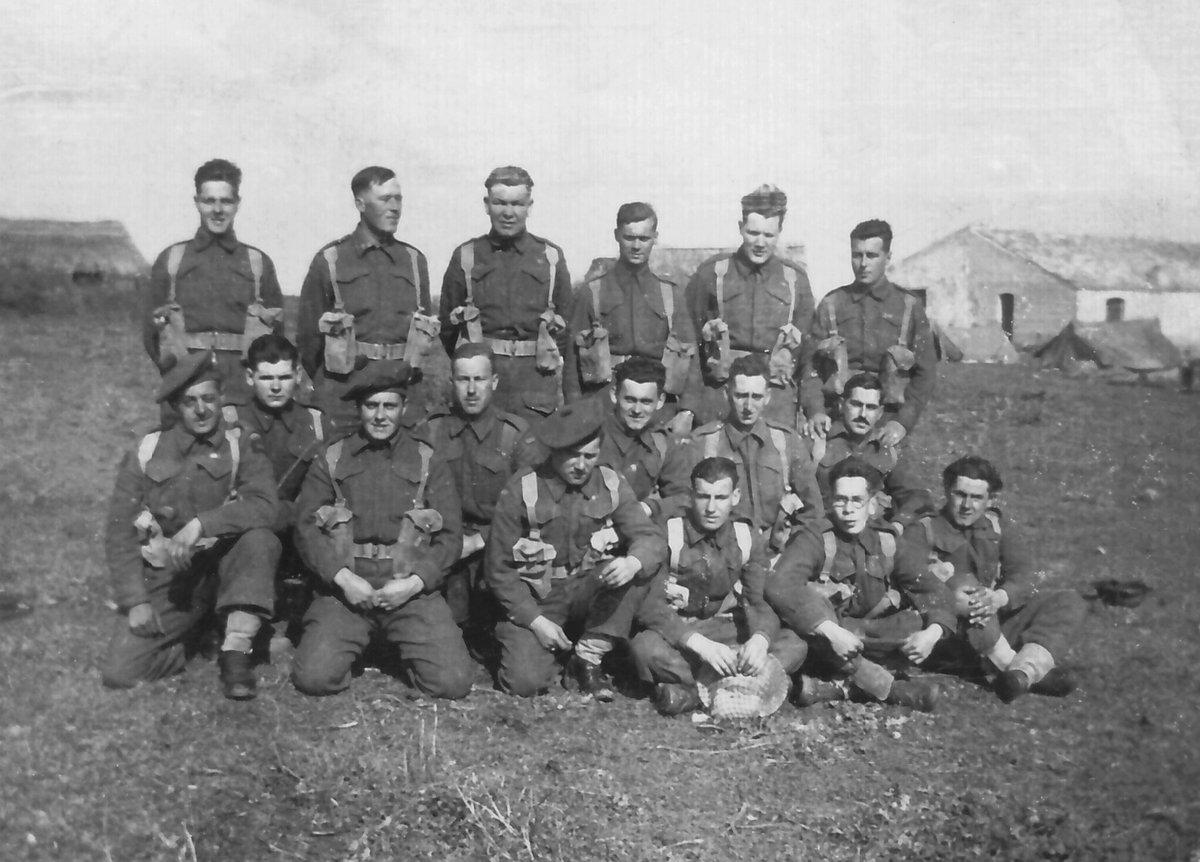
Yet Nova Scotia #coal production declined from a wartime high of nearly 7.4 million tons in 1941 to 5.1 million tons in 1945.
#nspoli #cbpoli #novascotia #capebreton #cb #ns #nshistory #mining
#nspoli #cbpoli #novascotia #capebreton #cb #ns #nshistory #mining

In the Dominion Coal Company mines, which accounted for close to 60% of the province’s coal production, output fell from 4.3 million tons in 1941 to less than 3 million tons in 1945.
#nspoli #cbpoli #novascotia #capebreton #cb #ns #nshistory #mining
#nspoli #cbpoli #novascotia #capebreton #cb #ns #nshistory #mining







